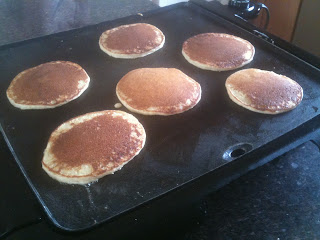Homemade Potato Chips
Homemade Potato Chips sounded like a good idea. My husband had recently suggested we drop processed snacks from the grocery list and I obliged. As a result, I found myself baking and cooking snacks from scratch so that my kiddos could still enjoy a treat now and then.
Homemade Potato Chips was among the list.
The picture and recipe, which I found on a blog named food for my family, was enticing and simple. Whole food and ingredients was the draw for me.
So, I got right to work.
I gathered my ingredients: Potatoes, Olive Oil, Sea Salt, my
food processor, two baking sheets, & parchment paper.
Easy, breezy!
I preheat the oven to 400 degrees (convection). Easier yet.
I sliced the potatoes, brushed them lightly with the oil,
and salted them. All is good.
Then a problem occurred. Some were turning brown, really
brown on the edges, but staying soft in the middle. When we tried the first
batch, they tasted really good….as long as the brown didn’t get too big. The
mild softness in other parts of the chip wasn’t a problem, but my mind went
straight to food safety rule regarding cooked potatoes at room temperature.
According
to the Center for Science in the Public Interest “The most common produce items
associated with outbreaks [of food-born illness] are greens-based salads,
lettuce, potatoes, unspecified fruits and sprouts”(OUTBREAKS BY
THE NUMBERS:
FRUITS AND VEGETABLES, 1990-2005). The Washington State Food & Beverage Workers’ Manual suggests keeping
cooked potatoes out of the danger zone (41-140 degrees) for extended periods of
time to avoid illness from a potato. The recipe, on the other hand, called for these somewhat soft chips to be stored in a air-tight container*.
So, my concern was that
with an unevenly cooked potato, I would need to refrigerate the chips to keep
them safe. The really brown, crispy part would be safe, like from a bag of
Lay’s chips from the store. But the soft part…that would be like keeping potato
salad on the counter for a day or so then eating it. The chips would have to be
kept cold.
I tried turning off the
convection oven and to no avail. Still the same result.
My final decision about the Homemade Potato Chip….unless we were going to consume the chips immediately and until I find a way to cook them evenly, we’ll just be leaving them out of the regular family diet all together. Who wants to eat refrigerated potato chips?
(directions as listed on the above named blog)
2 pounds potatoes
1/4 cup olive oil
sea salt
Preheat oven to 400° F. Using a mandoline or vegetable peeler, shave potatoes into very thin slices. Lay slices onto parchment-lined baking sheets. Brush lightly with olive oil on both sides and sprinkle lightly with sea salt.
Bake at 400° F for 15 minutes or until potatoes start to turn golden on one side. Flip the slices and continue baking for another 7-10 minutes. Flip again and bake until potatoes are golden brown and crisp, another 5-10 minutes. Cool slightly and serve warm or cool completely and store in airtight container*.
Makes 6 cups potato chips.
















